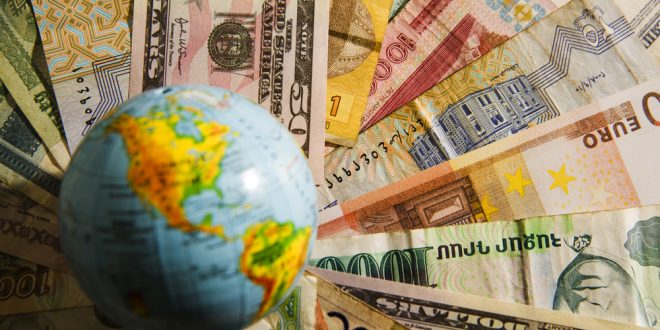A recent report by Goldman Sachs Group highlighted the rise of emerging market currencies against the declining U.S. Dollar (USD) despite the recent surges in the United States Treasury yields.
The MSCI Emerging Market Currency Index saw a series of gains recently, reaching a new record high last Friday as the USD saw its biggest weekly decline since the beginning of the year, Bloomberg reported.
Most market experts expect more depreciation for the USD after Congress passes the $1.9 trillion stimulus package, as proposed by President Joe Biden in what he is calling the American Rescue Plan to help the American economy recover from the impact of the Coronavirus pandemic, especially with the continuous easing policies by the Federal Reserve.
The Goldman Sachs report expects global economic recovery to help currencies rise against the USD, noting that “global growth should be very strong over the next six months as the vaccination campaigns play out.”
“We expect global cyclical forces to dominate some degree of ‘U.S. outperformance’, resulting in dollar downside for most crosses.”
The appreciation of emerging market currencies against the USD could help encourage more investors to seek local-currency-denominated debt instruments in emerging markets with their returns now higher in USD terms.
This seems to be the case in the Chinese market, as the Chinese Yuan (CNY) has been rising since the second half (H2) of 2020.
“Macro fundamentals for the yuan continue to look solid,” the report noted.
The Russian central bank recently ended its monetary easing cycle, with the economy showing recovery signs from the impact of the coronavirus pandemic and inflation pressures increasing. Accordingly, the bank, which will issue its monetary policy report on Saturday, held rates steady for the fourth consecutive month.
Meanwhile, the Turkish Lira (TRY) has been showing recovery signs since the beginning of 2021, leading gains against the USD. It is expected that the Turkish central bank will maintain its monetary policy in the Thursday meeting, holding the main rate at 17%, after data showed a rise in inflation for the fourth consecutive month in January.
On the other hand, the Bank Indonesia is set to ease its policy and is expected to cut benchmark interest rates by 25 basis points, as per a recent Bloomberg survey, but maintaining the current rates could help extend the recent gains of the Indonesian Rupiah (IDR).
The Indian Rupee (INR) showed a negative performance last week, despite the progress in the rollout of vaccines in India. The Indian trade balance data for last month are expected to show a large deficit, which could add to the INR woes.
On the contrary, the South African Rand (ZAR) was among the best performers of last week, and upcoming data are expected to show a rise in the annual inflation rate.
Moreover, S&P Global Ratings recently downgraded the long-term foreign-currency debt rating of Ethiopia to B- from B, as the Ethiopian economy continues to suffer from the impact of the pandemic.
 Noor Trends News, Technical Analysis, Educational Tools and Recommendations
Noor Trends News, Technical Analysis, Educational Tools and Recommendations





